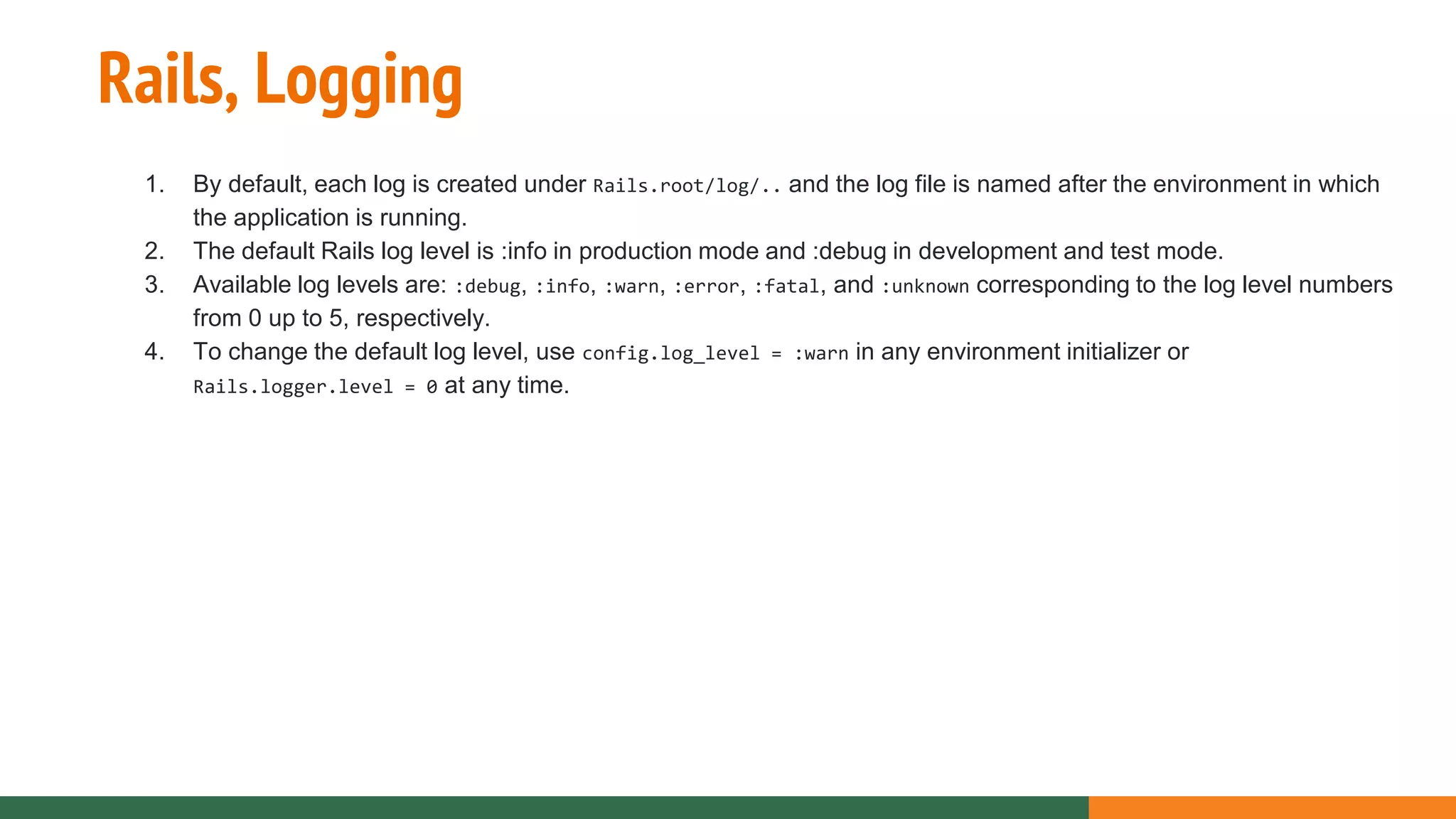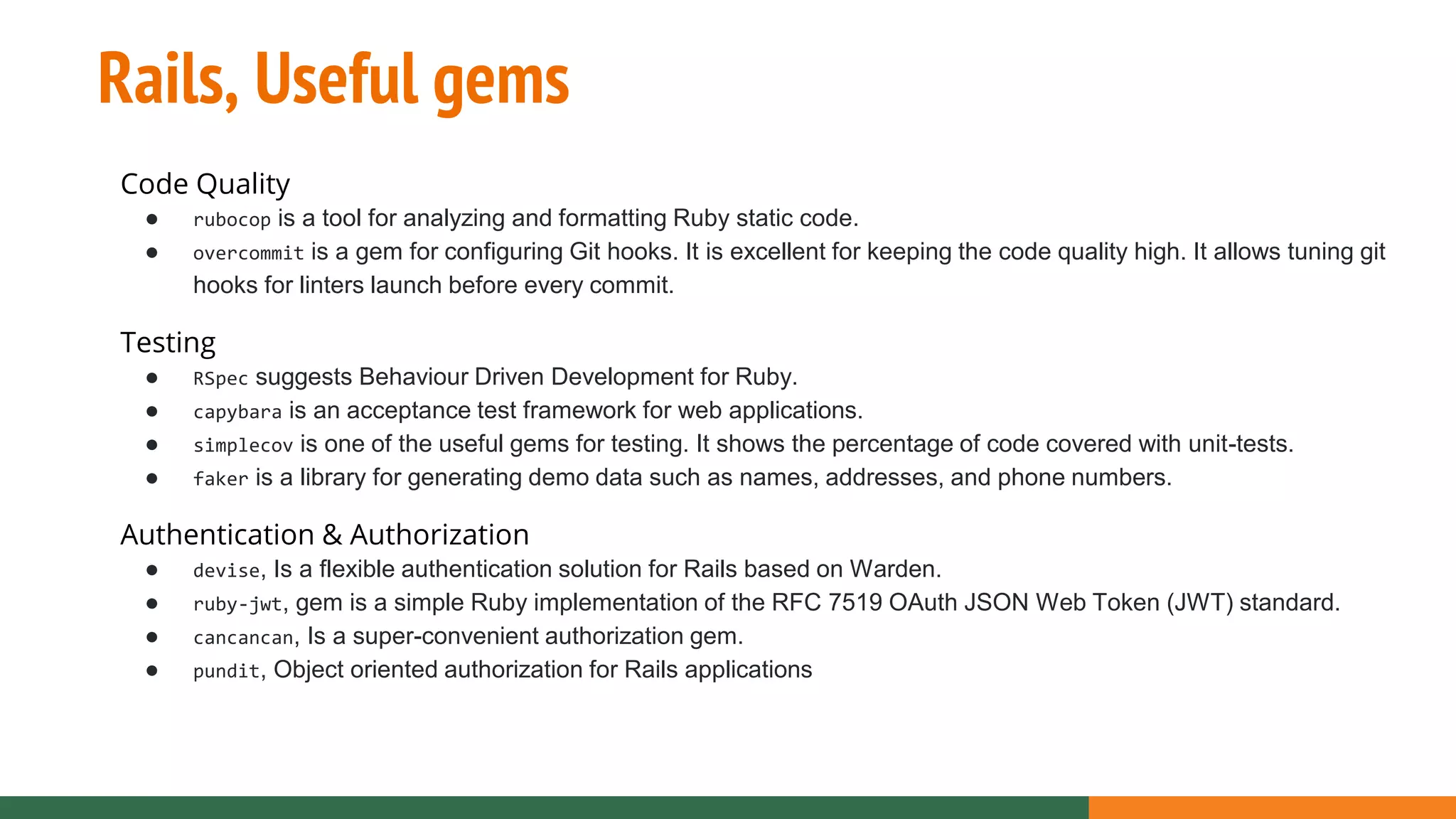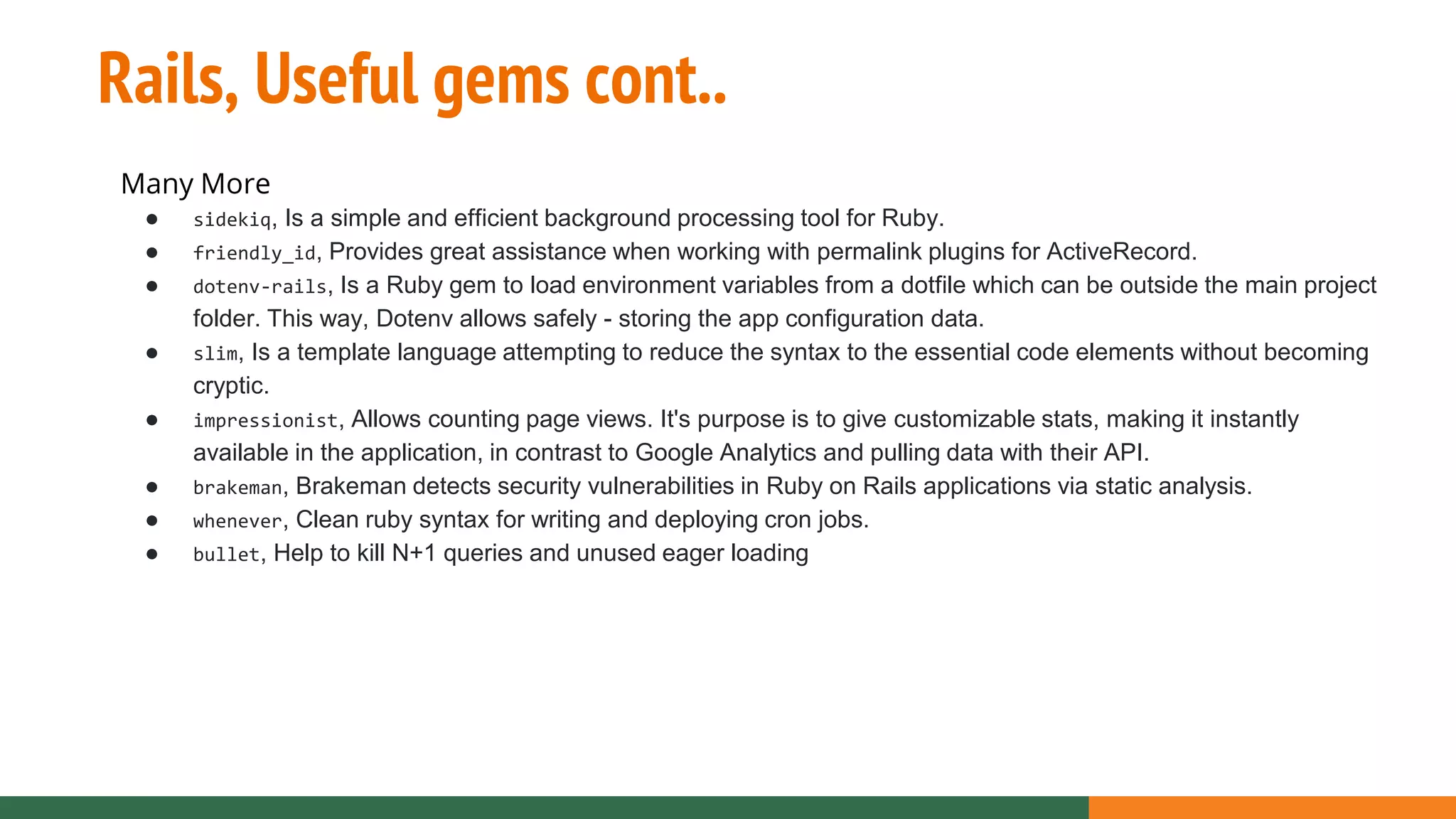This document provides guidelines for coding in Ruby on Rails. It covers naming conventions and formatting for Ruby code, as well as best practices for Rails configuration, routing, controllers, models, migrations, views, and logging. Useful gems are also listed, including RSpec for testing, Devise for authentication, Sidekiq for background jobs, and FriendlyId for permalinks.

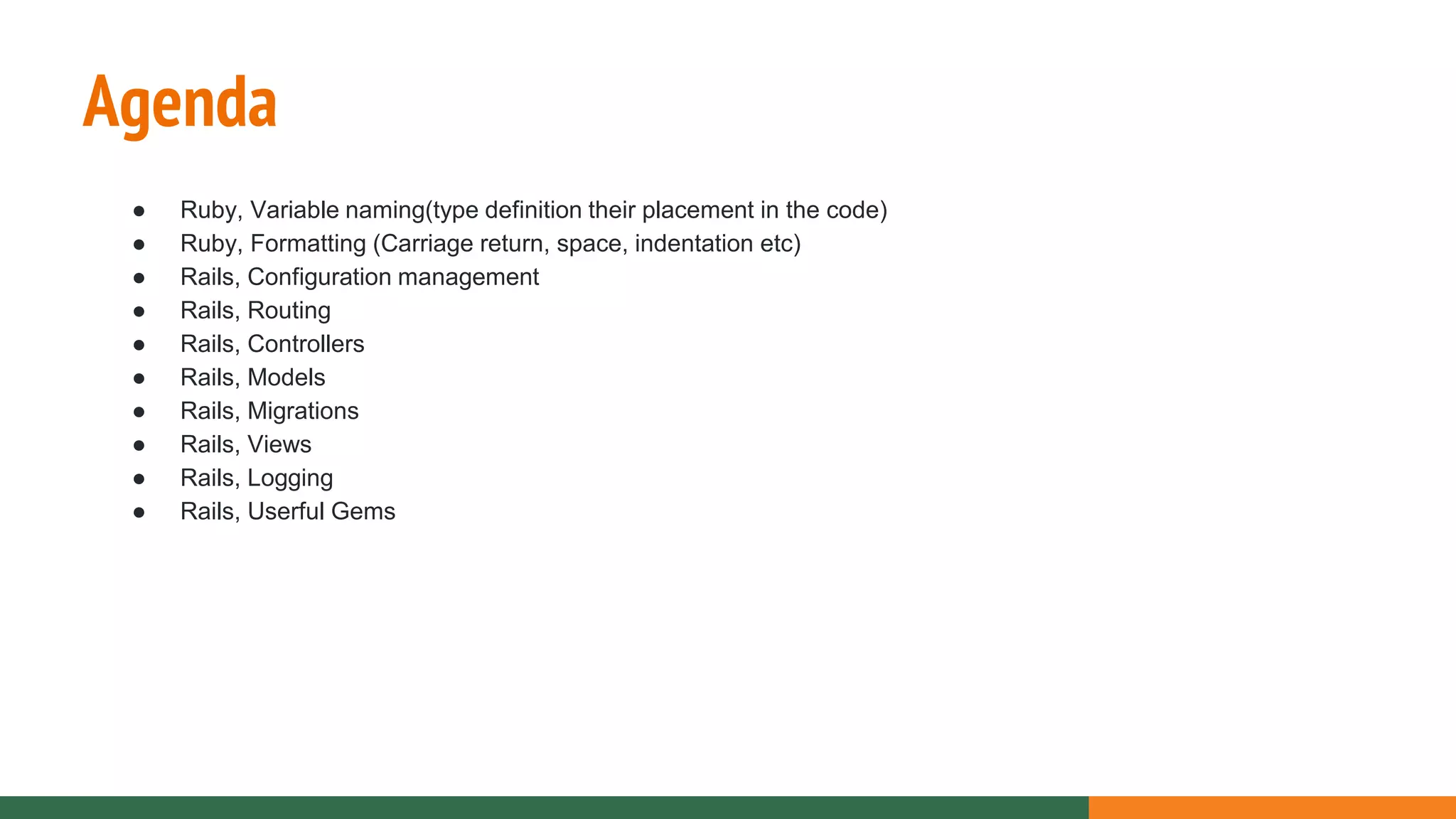
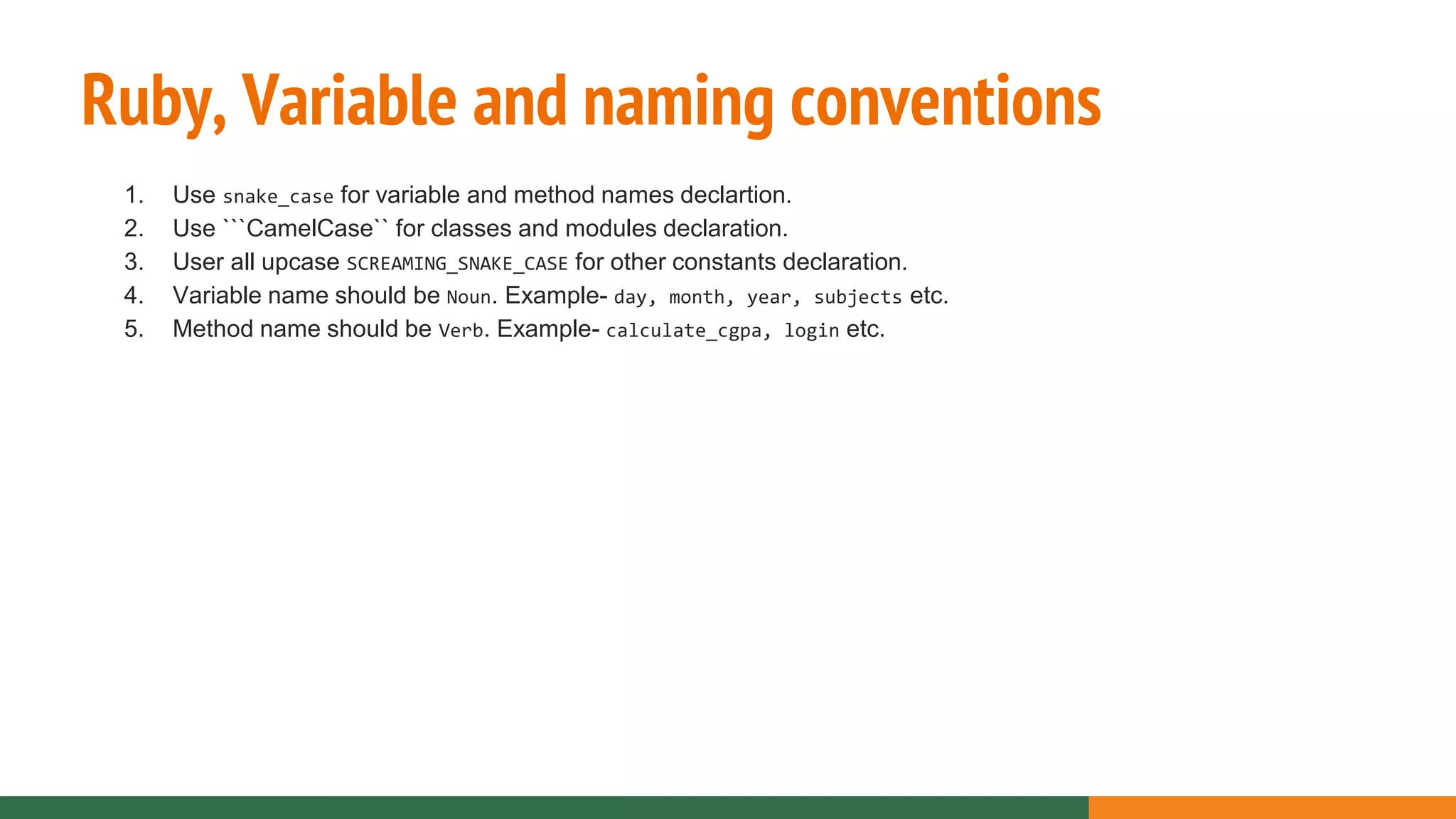
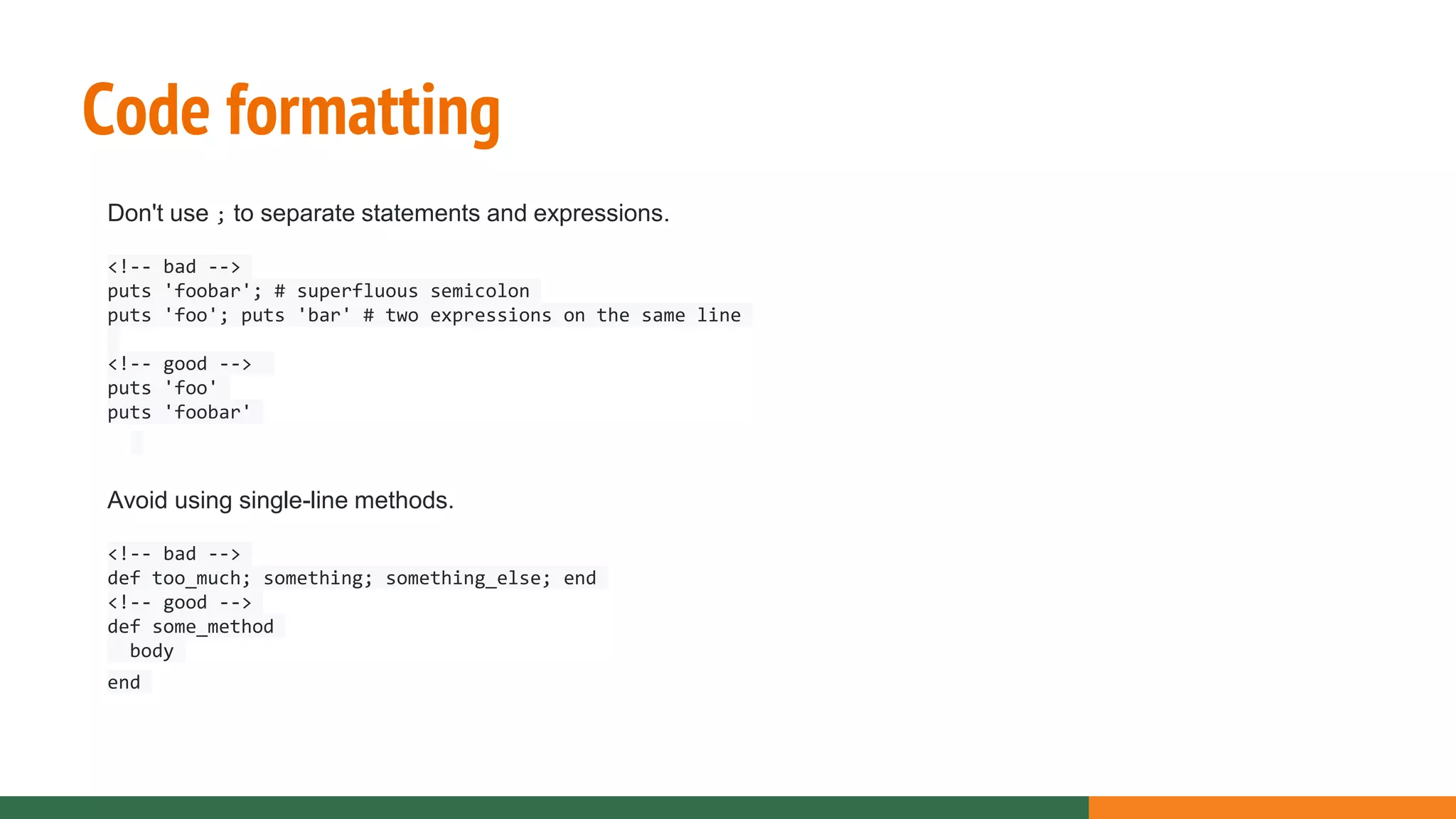
![Code formatting cont.. Use spaces around operators, after commas, colons and semicolons, around { and before } for better readability. <!-- bad --> sum= 1+2 a,b= 1,2 [1, 2,3].each{|e| puts e} <!-- good --> sum = 1 + 2 a, b = 1, 2 [1, 2, 3].each { |e| puts e } class FooError < StandardError; end](https://image.slidesharecdn.com/rubyonrailsguideline-191015072334/75/Ruby-on-Rails-Coding-Guideline-5-2048.jpg)
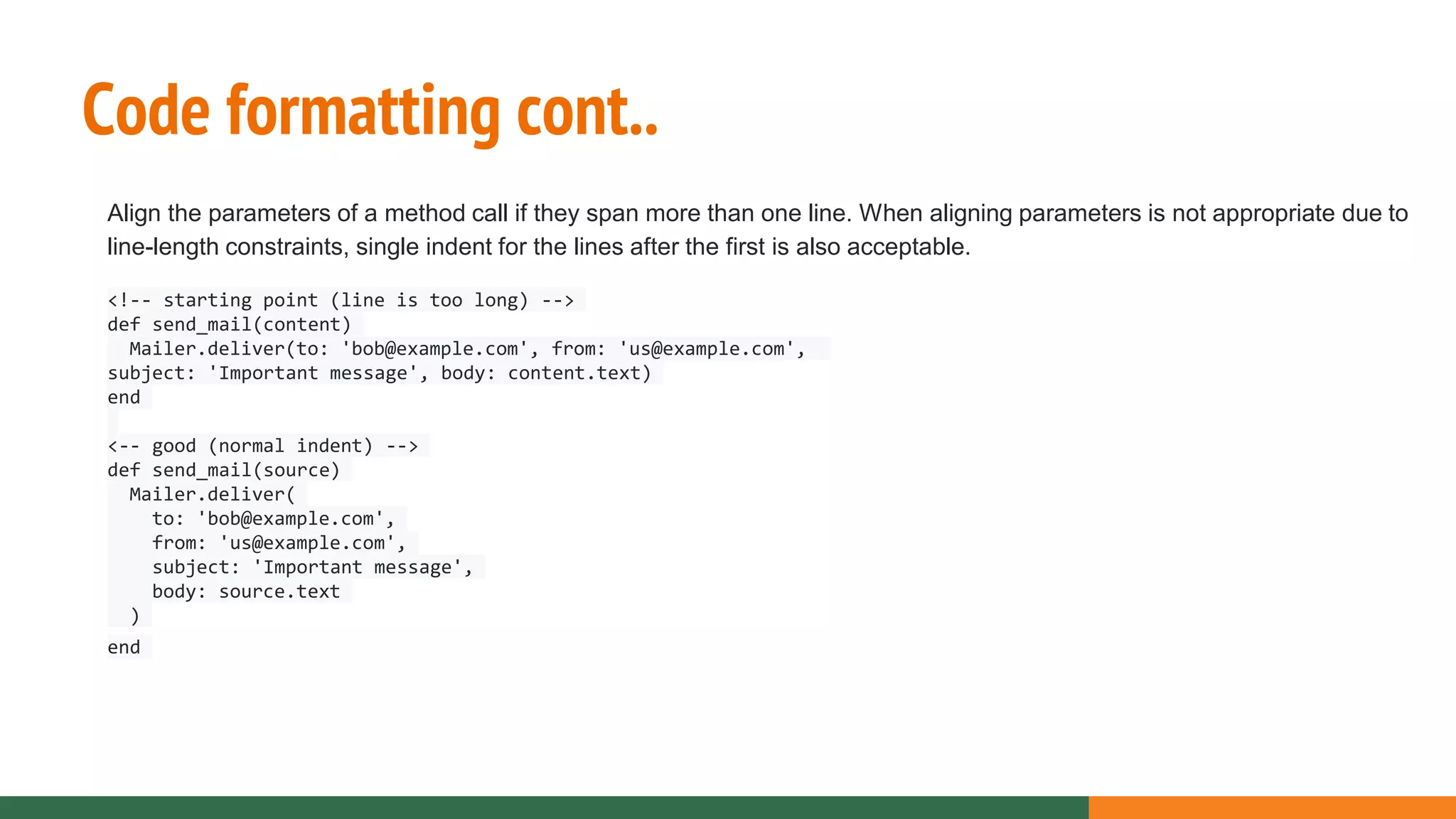
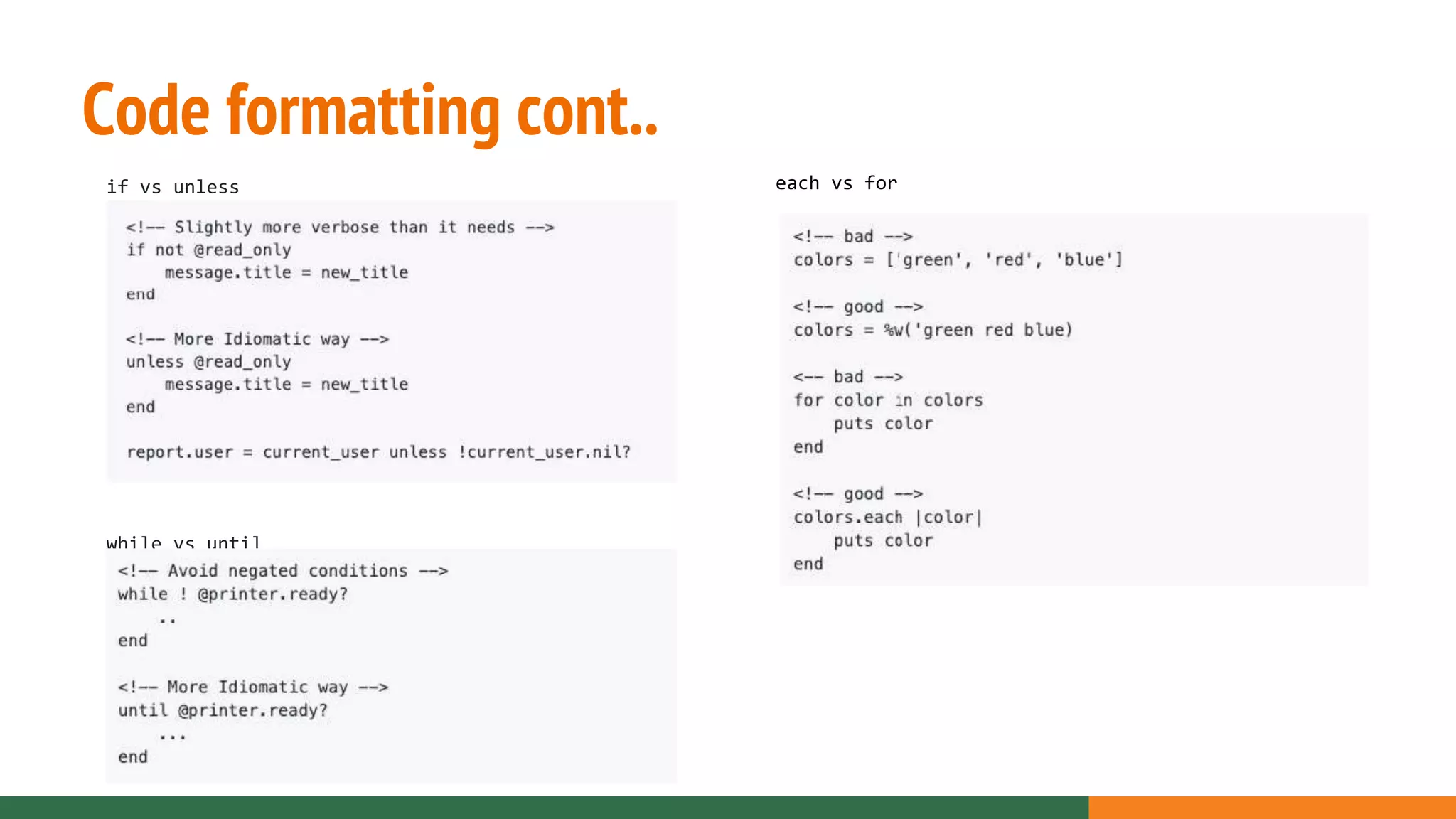
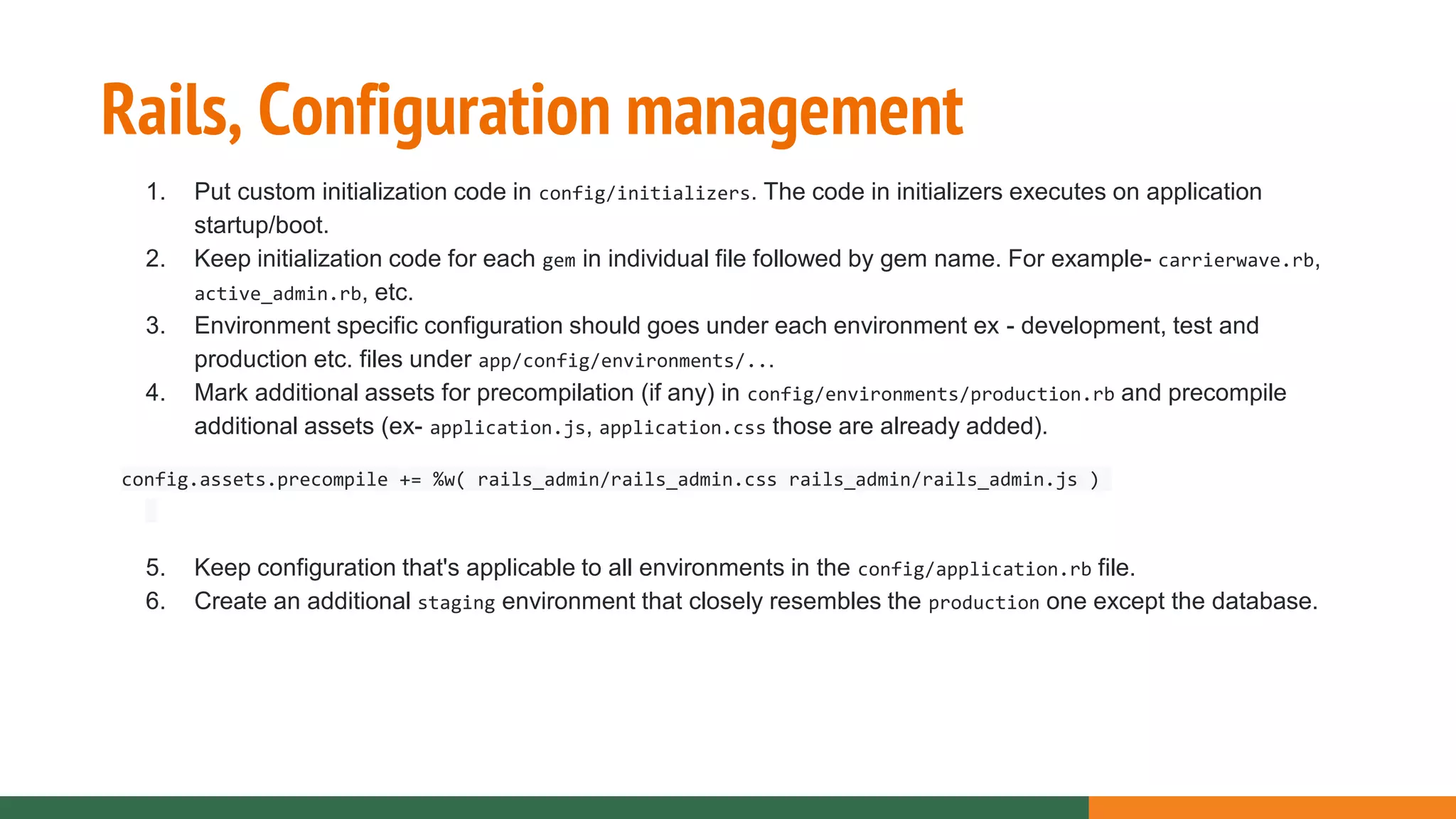
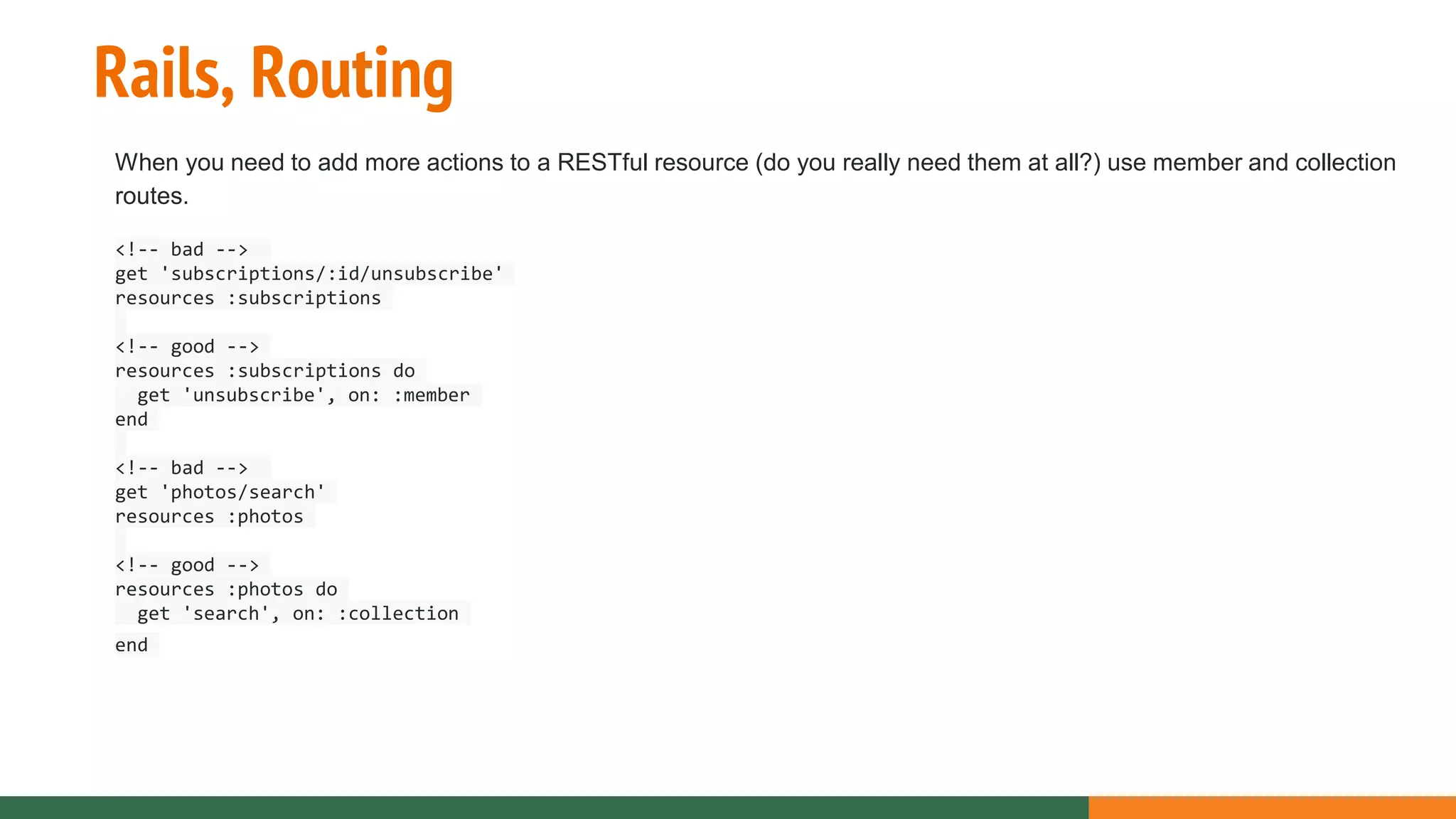
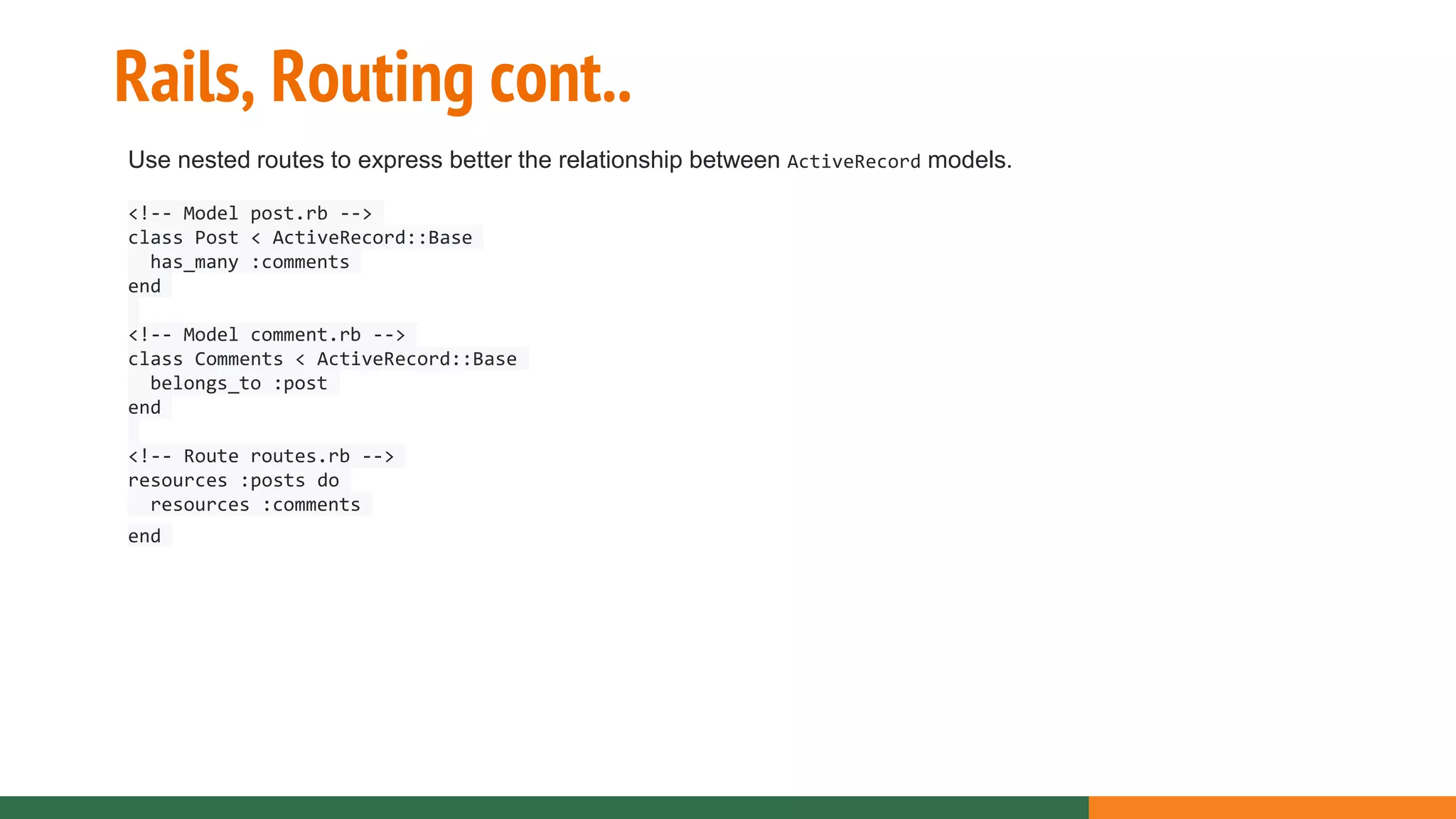
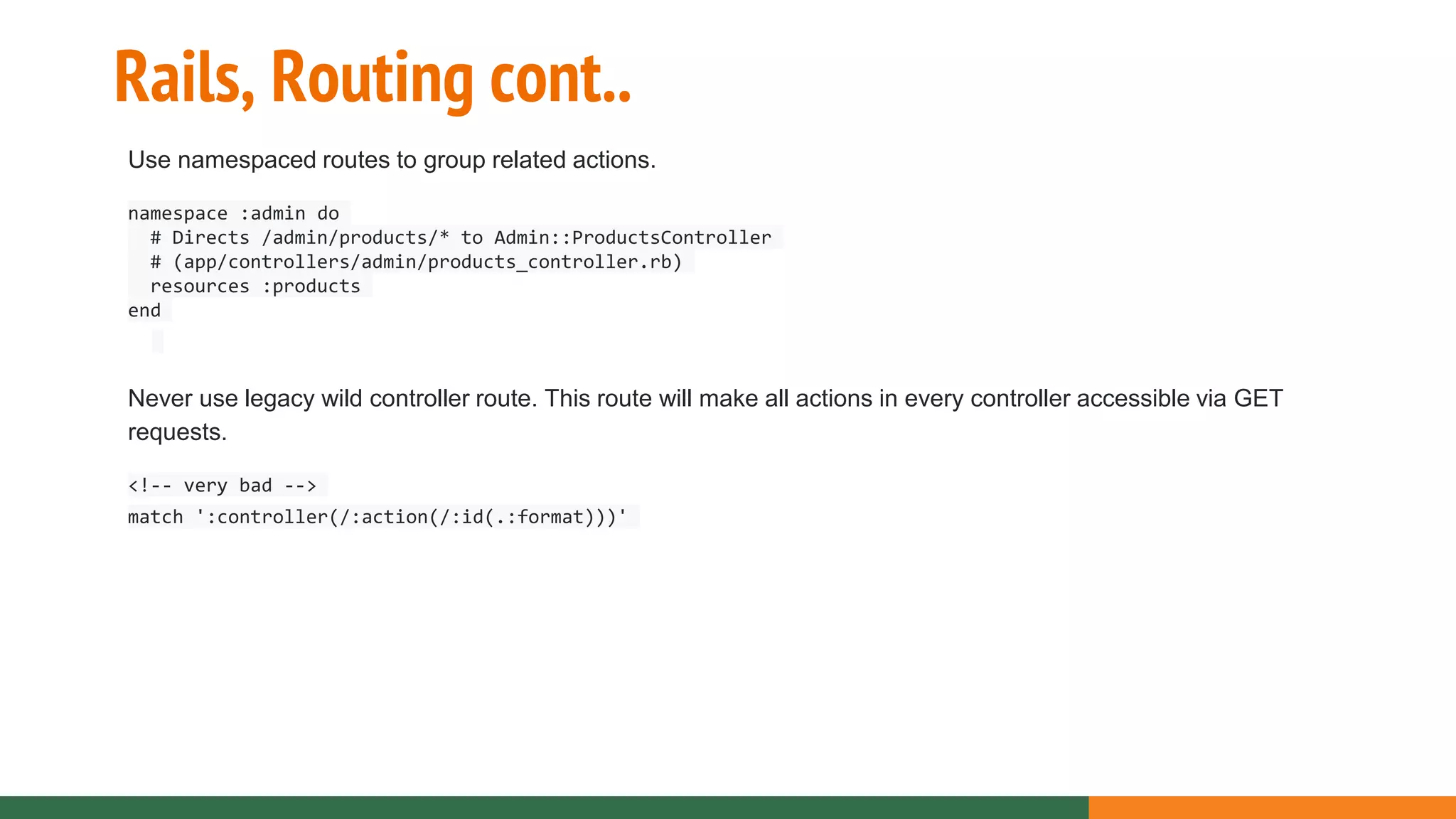
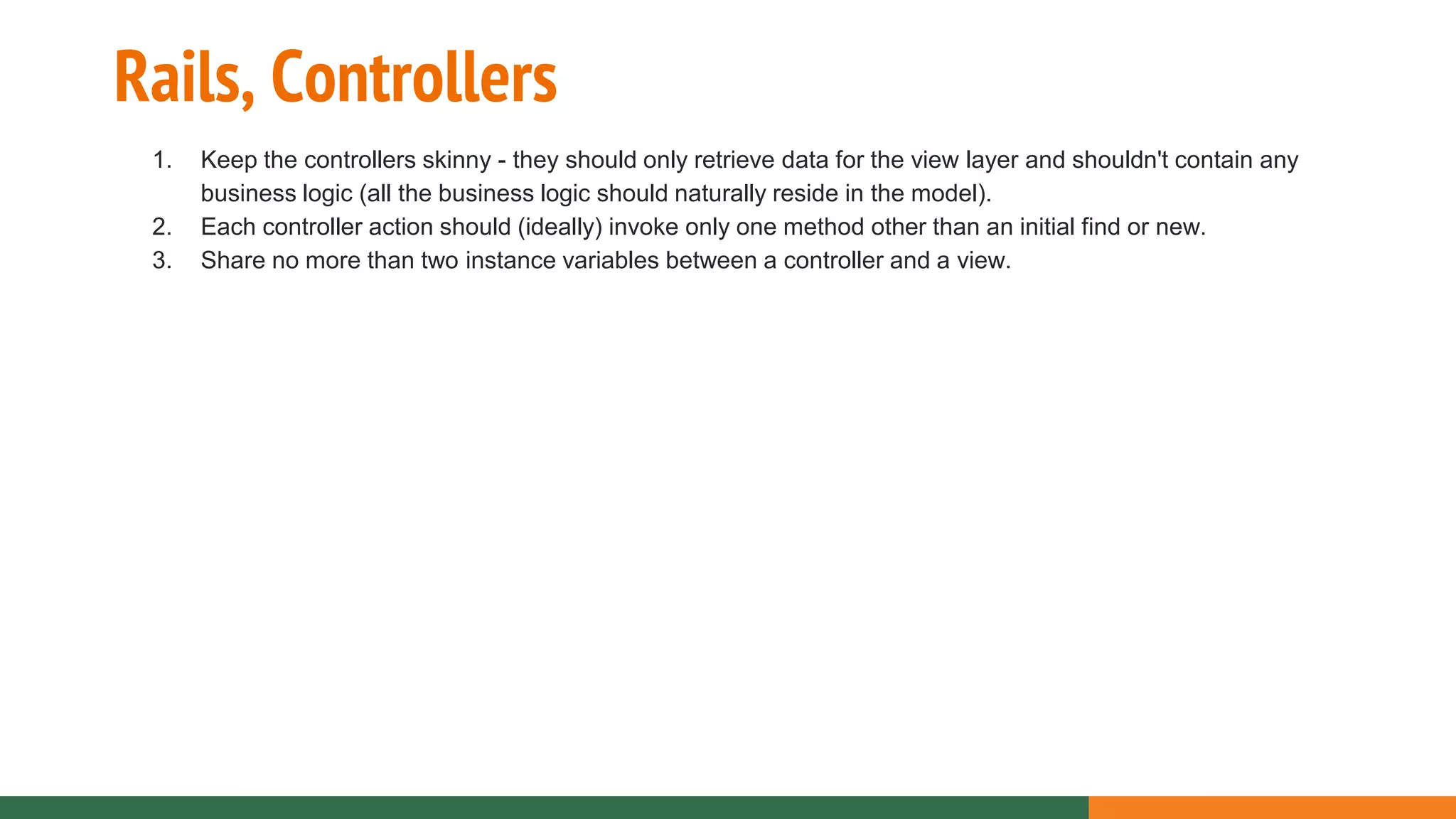
![Rails, Models 1. Introduce non-ActiveRecord model classes freely. 2. Name the models with meaningful (but short) names without abbreviations. 3. If you need model objects that support ActiveRecord behavior(like validation) use the ActiveAttr gem. class Message include ActiveAttr::Model attribute :name attribute :email attribute :content attribute :priority attr_accessible :name, :email, :content validates :name, presence: true validates :email, format: { with: /A[-a-z0-9_+.]+@([-a-z0-9]+.)+[a-z0-9]{2,4}z/i } validates :content, length: { maximum: 500 } end](https://image.slidesharecdn.com/rubyonrailsguideline-191015072334/75/Ruby-on-Rails-Coding-Guideline-13-2048.jpg)
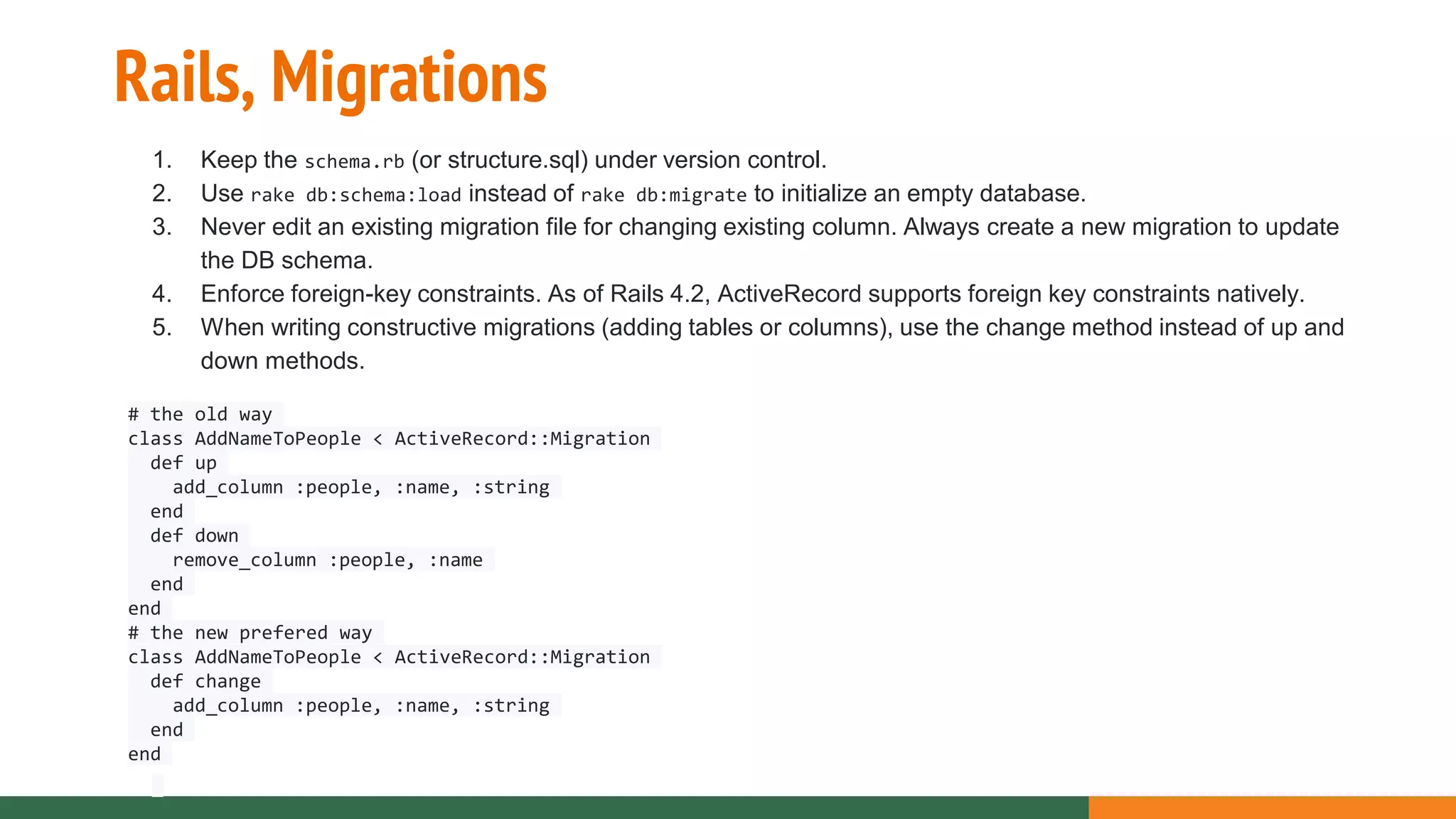
![Rails, View 1. Never call the model layer directly inside a view file. <!-- bad (users/index.html.erb) --> <table> <tr> <td>ID</td> <td>Name</td> <td>Email</td> </tr> <tr> <% User.all.each() do |user| %> <td><%= user.id %></td> <td><%= user.name %></td> <td><%= user.email %></td> <% end %> </tr> </table> <!-- good and preferred way --> <!-- users_controller.erb --> def index @users = User.all.paginate(:page => params[:page]).order_by_name() end <!-- users/index.html.erb --> <table> <tr> <td>ID</td> <td>Name</td> <td>Email</td> </tr> <tr> <% @users.each() do |user| %> <td><%= user.id %></td> <td><%= user.name %></td> <td><%= user.email %></td> <% end %> </tr> </table> <%= will_paginate @users %> 2. Never make complex formatting in the views, export the formatting to a method in the view helper or the model. 3. Mitigate code duplication by using partial templates and layouts.](https://image.slidesharecdn.com/rubyonrailsguideline-191015072334/75/Ruby-on-Rails-Coding-Guideline-15-2048.jpg)
